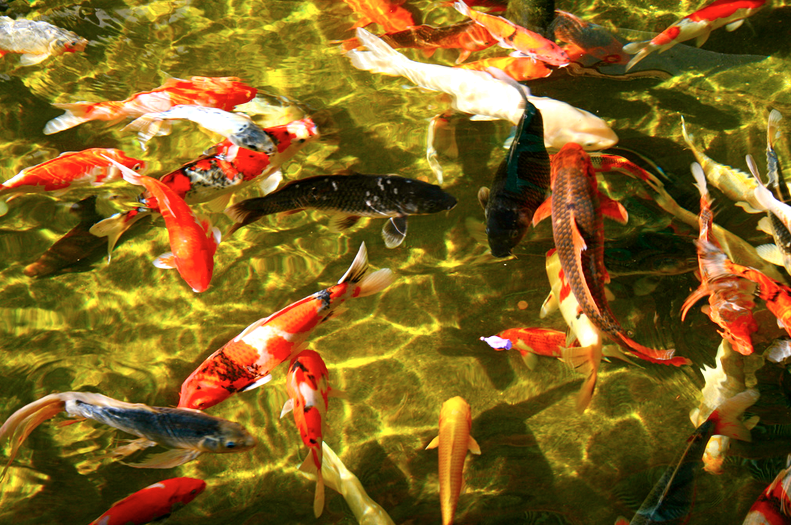Koi Fish Gender Identification
Koi fish are a great addition to any garden pond or aquarium. But whether you just brought your koi fish home or its spawning season fish friends, determining the sex of your koi fish can prove difficult for new owners. This is especially true if the koi are still young. However, determining koi fish gender is important for the health of your koi. If you can determine the gender of your koi, you can more easily watch for gender-specific sickness and disease in the koi’s life. Read ahead to learn more about koi genders!
SEXING KOI FISH
Sexing, or identifying the sex, can be difficult if the koi is under a foot long. However, with older koi you can easily identify the gender by comparing size. Generally, male koi are slimmer and smaller than their female counterparts. Female koi have a fuller body and broader shoulders. However, at a young age, male koi are typically larger than female. Male koi may also have larger pectoral fins than females. These fins are more pointed than round female fins.
You can also identify a koi’s gender by examining the vent area on the underside of the fish. A male koi will have a line from head to tail. A female koi will have the same line, but will also have another crossing in a “T” shape. A female’s vent will also be more round and more pink than a male’s.
If you carefully feel your koi’s pelvic bones, females will have a soft abdomen in between the bones for holding fish eggs. In male koi, however, these bones are fused. Again, these methods are difficult when koi are young.
Also take note of your koi fish’s eating habits. Females tend to be more aggressive during feedings, staying near the surface and continually eating, while male koi swim around more throughout the session.
During spawning season, male koi will develop some tiny white spots on the sides of their face. These are called tubercles and feel rough to the touch, like sandpaper. Females do not develop tubercles.
SPAWNING
Placing male and female koi together in a koi pond will not guarantee spawning. Koi prefer shallow areas around a pond to spawn. Many ponds have steep sides and are at a recommended five feet depth.
Female koi produce eggs each year if nutritional and environmental needs are met. These eggs are released once the water warms up enough (68˚F). The Japanese believe the full moon generates spawning.
Identifying koi fish gender can be tricky at first, but the task is essential to maintaining the health and wellness of your koi. Do you have any tips or tricks to identifying your koi’s gender? Let us know via the contact form.







